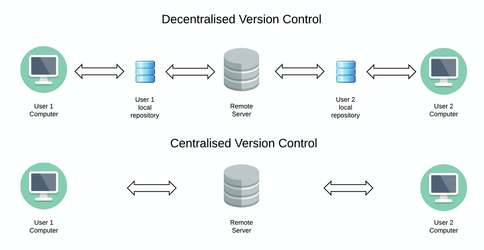/
Brief Version Control Systems (VCS) History
Attention: Confluence is not suitable for the storage of highly confidential data. Please ensure that any data classified as Highly Protected is stored using a more secure platform.
If you have any questions, please refer to the University's data classification guide or contact ict.askcyber@sydney.edu.au
Brief Version Control Systems (VCS) History
First Generation
- Concurrent Development was handled solely with locks. Only one person could be working on a file at a time.
- Networking not supported / One File at a Time operations
Examples : RCS, SCCS
Second Generation
- A bit more permissive about simultaneous modifications, with one notable restriction: Users must merge the current revisions into their work before they are allowed to commit.
- Centralized Networking / Multi-file operations
Examples : CVS, SourceSafe, Subversion, Team Foundation Server
Third Generation
- Separates merge and commit
- Distributed Networking / Changesets operations
Examples : GIT, Mercurial, Bazaar
Origins
- Linux Kernel Project
- Meant to be distributed, fast and more natural
- Capable of Handling Large Projects
Version control paradigms
, multiple selections available,
Related content
3. Extending the development timeline
3. Extending the development timeline
More like this
1. Git basics
1. Git basics
More like this
2. Sharing our repository
2. Sharing our repository
More like this
4. Dealing with conflicts
4. Dealing with conflicts
More like this

